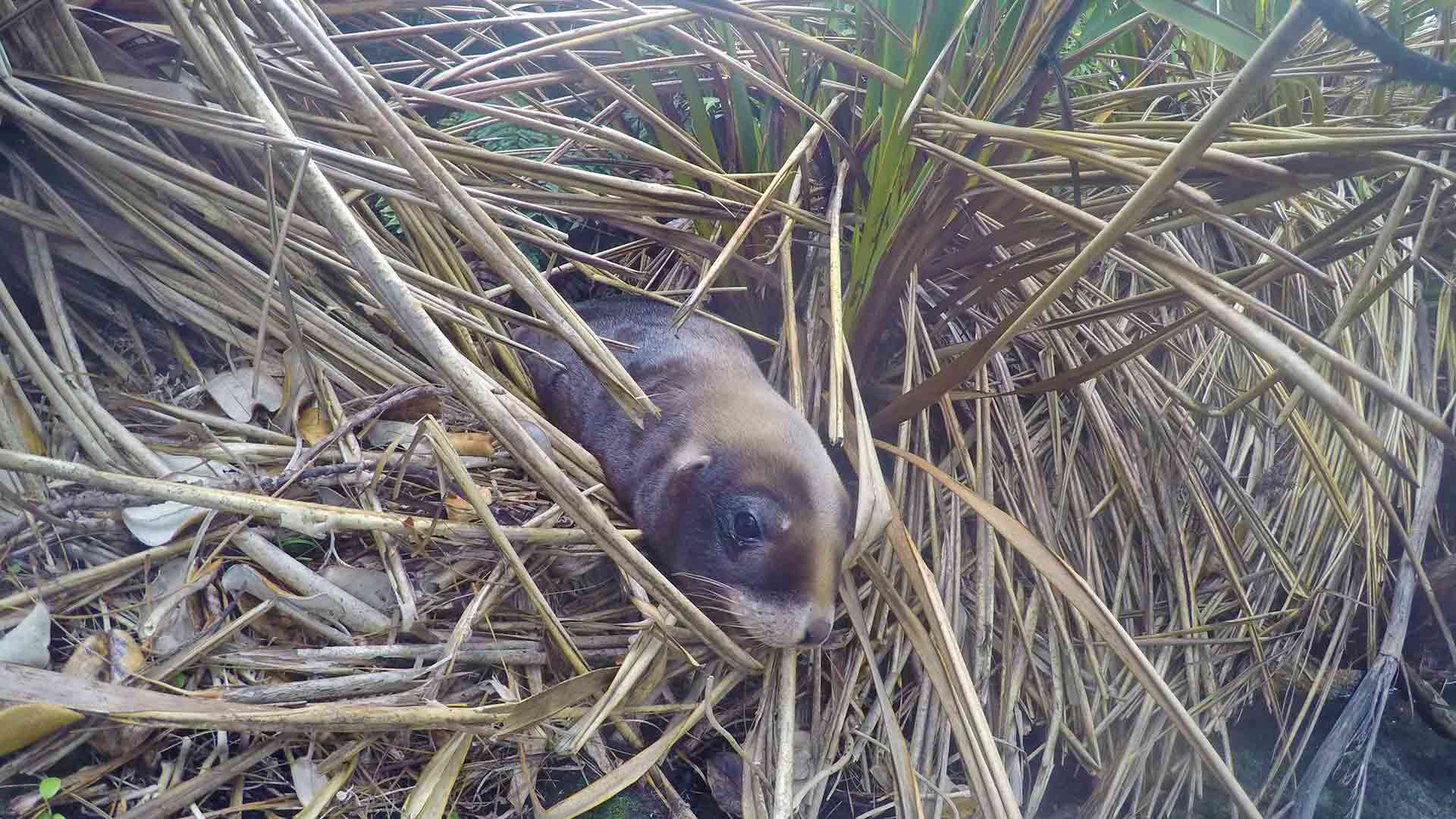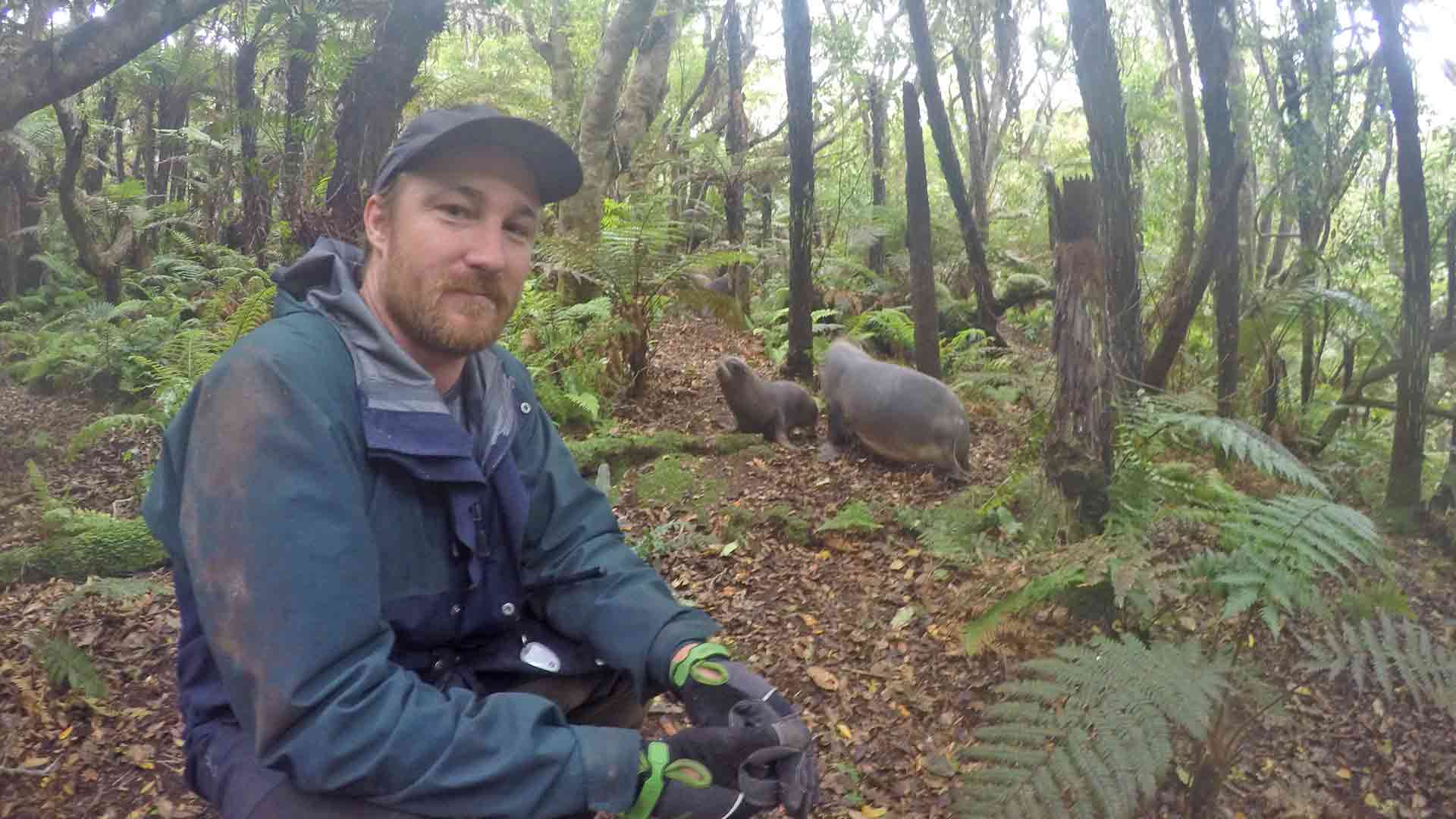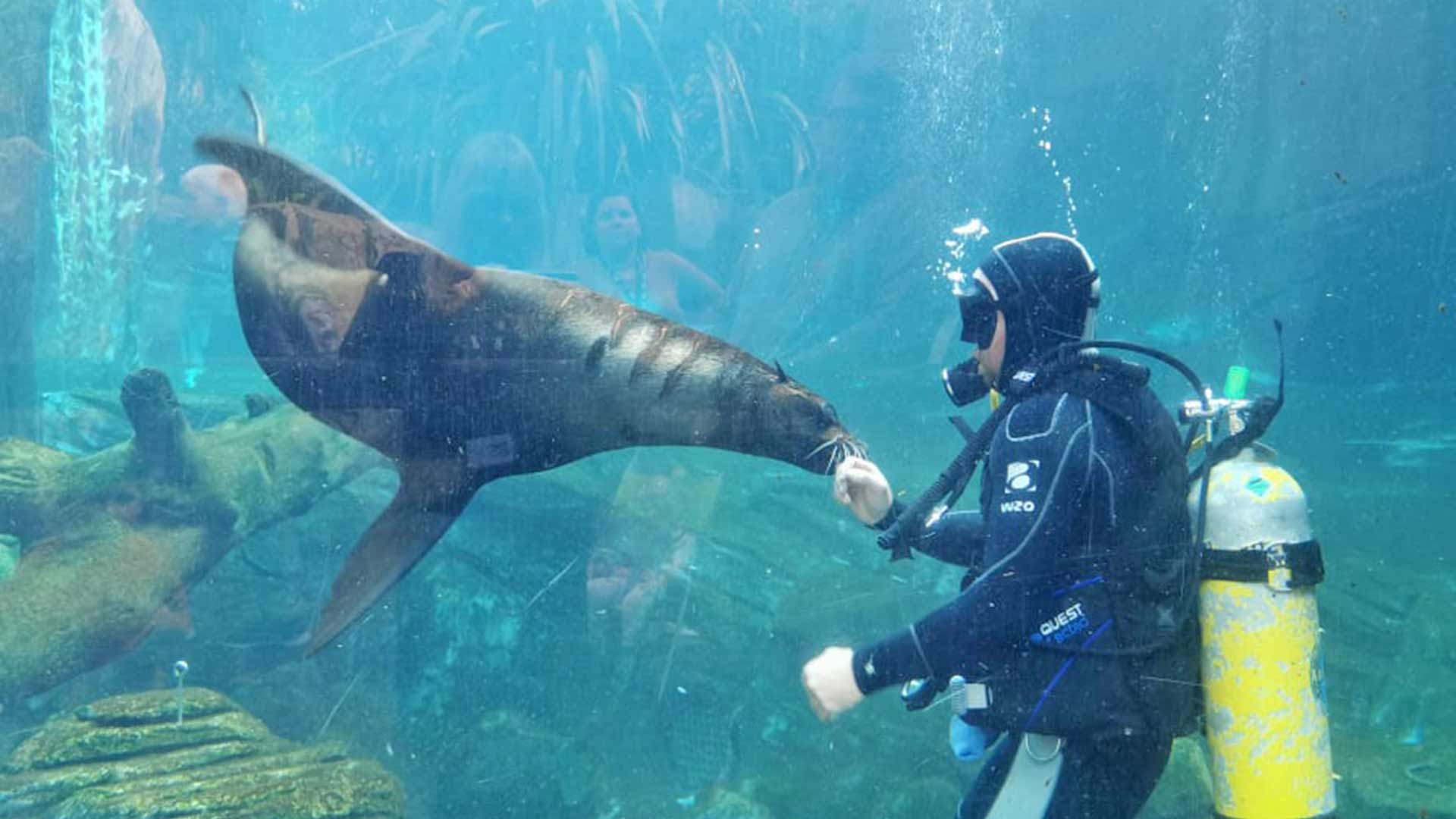While the New Zealand fur seal is commonly associated with residing in rocky coves and sand-lined headlands, the New Zealand sea lion has different ideas when it comes to choosing a home.
Sitting atop dense, bush-covered cliffs in the depths of Rakiura (Stewart Island), you may, if you’re lucky, spot glimpses of rāpoka (the New Zealand sea lion). In March, these remarkable and somewhat fearless creatures spend their time traversing the area’s hazardous landscape to find the perfect nesting and sheltering spot. While the New Zealand sea lion is a surprising mastermind at moving around the mud-laden, uneven terrain, it’s not such an easy feat for the group of conservationists who visit Stewart Island each year to complete important pup-tagging work.
Elephant and seal keeper Odin is one of the experts who boards the boat departing for Stewart Island each year, and this year, was his fourth time heading out. Thankfully he understands that hard work (and blisters) comes with the territory. And, that it’s all completely worth it to protect such a special species in need of help.








